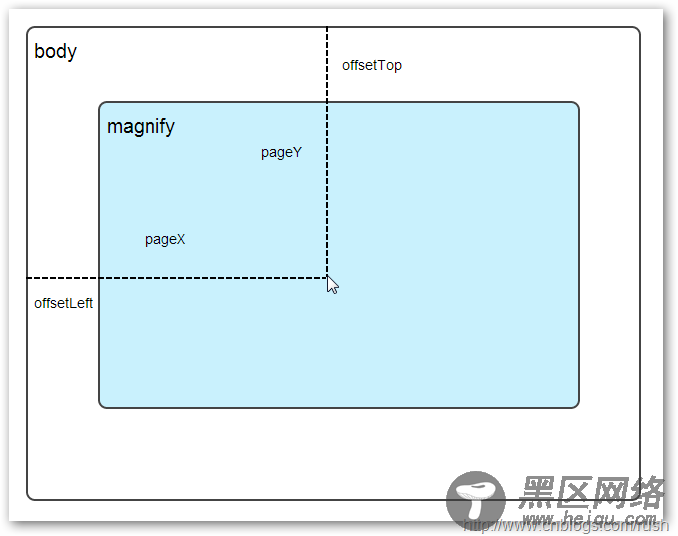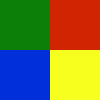相信大家都见过或使用过放大镜效果,甚至实现过该效果,它一般应用于放大查看商品图片,一些电商网站(例如:凡客,京东商城,阿里巴巴等)都有类似的图片查看效果。
在接下来的文章中,我们将向大家介绍通过jQuery实现放大镜效果。
1、实现原理
首先,我们讲解一下放大镜效果的实现方式:
方法一:准备一张高像素的大图,当鼠标放到原图上,加载显示大图的对应位置。
方法二:对原图片进行放大,也就是调整原图的长和宽。
上面我们介绍了通过两种方式实现放大镜效果,接下来,我们将以上的两种方式应用到我们的jQuery插件中。
首先,我们需要一个img元素显示原图对象,还需要一个容器作为显示框;显示框里面存放大图对象。当鼠标移动到原图上时,通过对大图进行绝对定位来显示对应的部位,实现类似放大镜的效果。
接下来,让我们定义Index.html页面,具体实现如下:
<!doctype html> <html lang="en-US"> <head> <meta http-equiv="Content-Type" content="text/html;charset=utf-8"> <title>jQuery Image Zoom Demo</title> <meta content="Jackson Huang"> </head> <body> <div> <div></div> <img src="https://www.jb51.net/article/img/1.jpg" /> </div> </body> </html>
上面,我们定义了small对象用于显示原图,而large对象作为一个显示框用来显示大图的对应位置。
2、mousemove事件
接下来,我们通过jQuery插件形式来实现放大镜效果,当鼠标移动到small对象上方时,就会在large对象中显示大图的对应位置,这就涉及到mousemove事件了,所以,我们需要实现mousemove事件的监听方法(如何定义jQuery插件可以参考《自定义jQuery插件Step by Step》)。
现在,让我们实现jquery.imagezoom.js插件吧!
; (function ($) { $.fn.imageZoom = function (options) { // The native width and height of the image. var native_width = 0, native_height = 0, current_width = 0, current_height = 0, $small = $(".small"), $large = $(".large"); $(".magnify").mousemove(function (e) { /* Act on the event */ if (!native_width && !native_height) { var image_object = new Image(); image_object.src = $small.attr('src'); // Gets the image native height and width. native_height = image_object.height; native_width = image_object.width; // Gets the image current height and width. current_height = $small.height(); current_width = $small.width(); } else { // Gets .maginfy offset coordinates. var magnify_offset = $(this).offset(), // Gets coordinates within .maginfy. mx = e.pageX - magnify_offset.left, my = e.pageY - magnify_offset.top; // Checks the mouse within .maginfy or not. if (mx < $(this).width() && my < $(this).height() && mx > 0 && my > 0) { $large.fadeIn(100); } else { $large.fadeOut(100); } if ($large.is(":visible")) { /* Gets the large image coordinate by ratio small.x / small.width = large.x / large.width small.y / small.height = large.y / large.height then we need to keep pointer in the centre, so deduct the half of .large width and height. */ var rx = Math.round(mx / $small.width() * native_width - $large.width() / 2) * -1, ry = Math.round(my / $small.height() * native_height - $large.height() / 2) * -1, bgp = rx + "px " + ry + "px", px = mx - $large.width() / 2, py = my - $large.height() / 2; $large.css({ left: px, top: py, backgroundPosition: bgp }); } } }); });
上面,我实现了mousemove事件的监听方法,当鼠标移动到magnify对象中,我们需要获取当前鼠标的相对坐标位置,下面我们通过图片讲解如何获取鼠标的相对坐标位置。
3、相对坐标

图1鼠标相对坐标位置
当鼠标移动到magnify对象中,我们需要获取鼠标在magnify中的相对坐标位置,这里我们把相对坐标定义为(mx,my),通过上图我们知道相对坐标等于(pageX - offsetLeft, pageY - offsetTop)。
现在,我们已经获取鼠标在magnify对象中的坐标值,接下来,需要获取对应大图的相应坐标,这里我们把大图的对应坐标定义为(rx,ry),我们可以通过比例关系获取(rx,ry)的值。
mx / small.width (原图的宽)= rx / native_width(大图的宽)
my / small.height (原图的长)= ry / native_height(大图的长)
通过上面的比例关系,我们知道大图的坐标(rx,ry)等于(mx/small.width*native_width, my/small.height*native_height)。
通过上述的公式,我们可以获取大图对应坐标位置,当鼠标移动到magnify对象中就显示对应位置的大图部位,接下来我们需要实现大图的加载实现了。
4、background-position属性
在实现大图加载显示之前,首先介绍CSS中背景定位background-position的知识。

图2 CSS background-position
